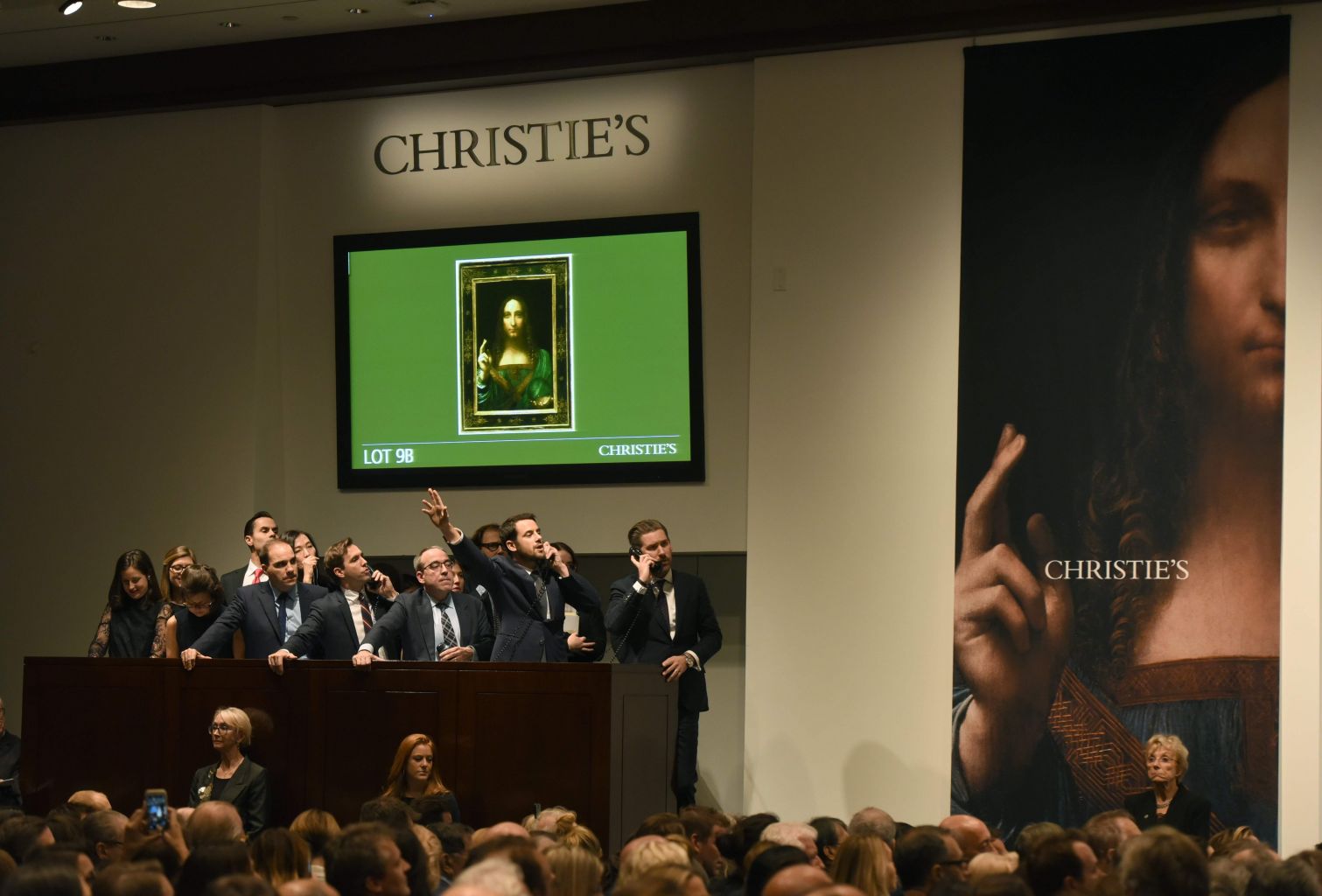Little known Saudi prince is buyer of world's most expensive painting, Leonardo Da Vinci's Salvator Mundi
Sign up now: Get ST's newsletters delivered to your inbox

The painting was sold last month in New York for US$450.3 million, with auction house Christie's steadfastly declining to identify the buyer.
PHOTO: AFP
Follow topic:
ABU DHABI (AFP, NYTIMES) - A little-known Saudi prince from a remote branch of the royal family, with no history as a major art collector and no publicly known source of great wealth, is the mystery buyer of Leonardo Da Vinci's painting Salvator Mundi, which fetched a record US$450.3 million (S$606.96 million) at auction last month, documents show.
The revelation that Prince Bader bin Abdullah bin Mohammed bin Farhan al-Saud is the purchaser, according to documents reviewed by The New York Times, links one of the most captivating mysteries of the art world with palace intrigues in Saudi Arabia that are shaking the region.
Prince Bader splurged on this controversial and decidedly un-Islamic portrait of Christ at a time when most of the Saudi Arabian elite, including members of the royal family, were cowering under a sweeping crackdown against corruption and self-enrichment. As it happens, Prince Bader is a friend and associate of the leader of the purge: the country's 32-year-old Crown Prince Mohammed bin Salman.
The US$450.3 million purchase is the clearest indication yet of the selective nature of the crackdown. The Crown Prince's supporters portray him as a reformer, but the campaign of extrajudicial arrests has been unprecedented for modern Saudi Arabia, worrying Western governments about political stability in the world's largest oil producer, alarming rights advocates and investors, and roiling energy markets.
The US$450.3 million purchase is the clearest indication yet of the selective nature of the crackdown. The Crown Prince's supporters portray him as a reformer, but the campaign of extrajudicial arrests has been unprecedented for modern Saudi Arabia, worrying Western governments about political stability in the world's largest oil producer, alarming rights advocates and investors, and roiling energy markets.
Prince Bader did not respond to a request for comment. But the newly opened branch of the Louvre in Abu Dhabi, in the United Arab Emirates, tweeted that the painting "is coming to Louvre Abu Dhabi". The Saudi Crown Prince is a close ally of his counterpart in Abu Dhabi.
The Louvre Abu Dhabi, the first museum to bear the Louvre name outside France, has been billed as "the first universal museum in the Arab world", in a sign of the oil-rich emirate's global ambitions.
The painting was sold last month in New York for US$450.3 million, with auction house Christie's steadfastly declining to identify the buyer.
"Congratulations", Christie's said in a tweeted reply to the Louvre Abu Dhabi.
Salvator Mundi represented a major prestige purchase in the art world, if a controversial one. Some experts questioned whether the painting was a true Leonardo. Some were simply unimpressed.
The painting's previous owner, Mr Dmitry E. Rybolovlev, is a Russian billionaire who bought a US$95 million Florida home from Donald Trump nearly a decade ago. Mr Rybolovlev had paid US$127.5 million for the painting in 2013, and he is still locked in litigation with the dealer who sold it to him over that lofty price, among other transactions.
The painting's previous owner, Mr Dmitry E. Rybolovlev, is a Russian billionaire who bought a US$95 million Florida home from Donald Trump nearly a decade ago. Mr Rybolovlev had paid US$127.5 million for the painting in 2013, and he is still locked in litigation with the dealer who sold it to him over that lofty price, among other transactions.
The French weekly Le Journal du Dimanche said that the work will be lent or resold to museums, largely in the Middle East and Asia.
The sale more than doubled the previous record of US$179.4 million paid for Pablo Picasso's The Women of Algiers (Version O) in 2015, also in New York.
The Louvre Abu Dhabi opened on Nov 8 in the presence of French President Emmanuel Macron, who described the new museum as a "bridge between civilisations".
It is the first of three museums slated to open on the emirate's Saadiyat Island, with plans also in place for an edition of New York's Guggenheim.
The island will also feature the Zayed National Museum, which had signed a loan deal with the British Museum - although the arrangement has come increasingly into question due to construction delays.
Featuring a vast silver-toned dome, the Louvre Abu Dhabi was designed by French architect Jean Nouvel, drawing inspiration from Arab design and evoking both an open desert and the sea.
The museum opened with some 600 pieces, including items from early Mesopotamia. Under a 30-year agreement, France provides expertise, lends works of art and organises exhibitions in return for one billion euros (S$1.59 billion).
The first works on loan from the Louvre in Paris include another painting by Da Vinci - La Belle Ferronniere, one of his portraits of women.
Salvator Mundi, which means "Saviour of the World", went on public display in 2011 in a dramatic unveiling at The National Gallery in London, where the work was declared to be the first newly discovered Da Vinci painting in a century.
It is one of fewer than 20 paintings generally accepted as being from the Renaissance master's own hand, according to Christie's.
It had sold for a mere 45 British pounds in 1958, when the painting was thought to have been a copy, and was lost until it resurfaced at a regional auction in 2005.

